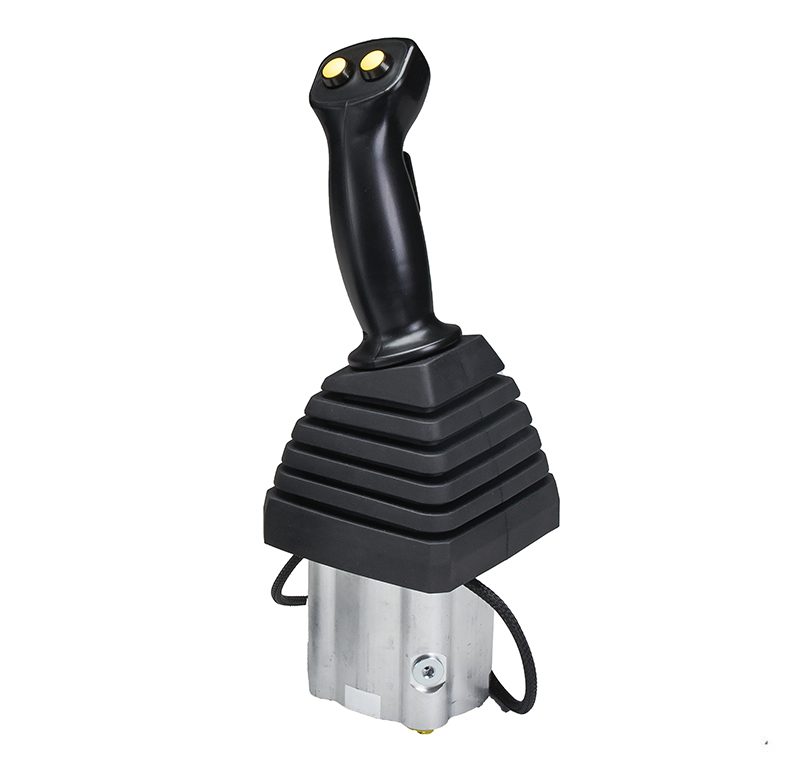 In the world of heavy machinery and industrial equipment, hydraulic joysticks serve as the critical interface between operator intent and mechanical action, translating subtle hand movements into powerful hydraulic functions across diverse applications like construction, agriculture, forestry, and marine operations. Understanding their compatibility with different systems is crucial for optimal performance, safety, and longevity of both the equipment and the hydraulic system.
In the world of heavy machinery and industrial equipment, hydraulic joysticks serve as the critical interface between operator intent and mechanical action, translating subtle hand movements into powerful hydraulic functions across diverse applications like construction, agriculture, forestry, and marine operations. Understanding their compatibility with different systems is crucial for optimal performance, safety, and longevity of both the equipment and the hydraulic system.
Why Choosing the Right Joystick Matters
Selecting the appropriate hydraulic joystick for your specific application is critical for several reasons:
- Operational Efficiency: A properly matched joystick provides smooth, precise control that improves overall productivity and reduces cycle times. QP’s hydraulic joysticks provide variable-speed operation for improved precision in hydraulic systems which is essential for achieving efficiency in complex operations.
- Operator Comfort and Reduced Fatigue: Ergonomically designed joysticks with appropriate resistance and travel distance minimize operator strain during extended operation periods. QP’s joysticks feature low-effort design to reduce operator fatigue which is especially important for operators working long shifts.
- System Protection: Incompatible joysticks can cause pressure spikes, flow restrictions, or improper valve actuation that may damage expensive hydraulic components.
- Safety Considerations: Reliable control is essential for preventing accidents, especially in applications involving heavy loads or hazardous environments. Using a malfunctioning hydraulic joystick can compromise safety and equipment performance, highlighting the importance of proper joystick selection and maintenance.
- Maintenance Reduction: Properly matched components tend to have longer service lives and require less frequent maintenance.
- System Integration: The right joystick ensures seamless integration without requiring extensive modifications, allowing for straightforward installation and operation without the need for complete system overhauls.
Key Compatibility Factors
- System Pressure and Flow Requirements:
Hydraulic joysticks must match the pressure and flow specifications of the system they control. For instance, QP Hydraulics’ JSH series joysticks are designed for working pressures up to 40 BAR and maximum operating pressures of 100 BAR, with a maximum flow of 25 L/min. - Fluid Compatibility:
The hydraulic fluid used in the system should be compatible with the joystick’s materials and seals. This includes viscosity ratings, additives, and temperature characteristics. The JSH series is suitable for use with all hydraulic mineral oils (10W recommended) including ISO, HM, and HV. - Port Configurations:
Ensuring that the joystick’s port sizes and types match the system’s requirements is vital for proper connection and function. QP Hydraulics’ joysticks come in standard and custom port sizes allowing for adaptation to various hydraulic system configurations. - Environmental Conditions:
Operating temperatures, humidity, dust levels, and exposure to chemicals can affect joystick performance and durability. The JSH series operates within a temperature range of -20°C to 90°C, making it suitable for various climates. - Handle Configurations and Ergonomics:
Different applications may require specific handle types for optimal control based on operator positioning and function requirements. QP Hydraulics provides multiple handle options to cater to diverse operational needs, ensuring the right fit for specific operator requirements and application demands. - Control Patterns and Functionality:
Consider whether your application requires single-axis joysticks that control movement in one direction (forward/backward or left/right) or multi-axis joysticks that allow for control in multiple directions making them ideal for applications requiring more complex movements. QP Hydraulics offers both single-axis (SLH and SLT) and multi-axis (JSH and JSC) configurations. - Hydraulic System Type:
Joysticks must be compatible with the overall hydraulic system design. QP’s joysticks are designed to integrate with a variety of hydraulic control systems, including open-center and closed-center configurations, ensuring versatility across different hydraulic architectures. - Proportional vs. On/Off Control:
The type of control needed is a critical consideration. Proportional control in hydraulic joysticks is essential for precision, efficiency, and operator comfort. Unlike on/off (binary) controls, which provide only full-speed or no movement, proportional control allows for smooth, variable-speed operation based on joystick movement.
Industry Applications
Hydraulic joysticks are versatile control solutions used across numerous industries:
- Construction Equipment: Cranes, Excavators, Dozers & Wheel Loaders
- Light Construction: Backhoes, Skid Steers & Telehandlers
- Forestry: Fellers/Bunchers, Log Loaders & Brush Cutters
- Agriculture: Nut Harvesters/Processors & Farm Equipment
- Industrial: Fork Trucks
- Oil & Gas: Specialized equipment
- Ground Support Equipment: Aviation and airport machinery
- Municipal: Public works and utility vehicles
QP Hydraulics’ Joystick Solutions
QP Hydraulics offers a range of hydraulic joysticks designed with compatibility and customization in mind:
- JSH Series: Built on proprietary Step Bore Technology, providing precise control and reduced operator fatigue.
- JSC Series: Offers the responsiveness and control of a standard hydraulic joystick in a smaller, more compact size.
- SLH Series: A stackable single-axis joystick that can be configured in systems of up to 10 banks.
- SLT Series: A thin (22mm) single lever version offering all the advantages of Step Bore technology.
Key features across all QP joystick models include:
- Low-Effort Design: Reduces operator fatigue.
- High Response: Delivers accuracy and control.
- Aluminum Body: Provides lower leakage and mass.
- Custom Configurations: Easily adaptable to specific applications.
- On-Spool Dampening: For reduced noise and smoother operation.
Additionally, QP Hydraulics’ stocking program ensures quicker lead times, allowing customers to receive joysticks in weeks rather than months.
Conclusion
Understanding the compatibility of hydraulic joysticks with different systems is essential for efficient and safe operations. By considering factors such as system pressure, fluid compatibility, port configurations, environmental conditions, handle ergonomics, control patterns, system type, and proportional vs. on/off requirements, operators can select the appropriate joystick for their specific needs.
QP Hydraulics’ customizable solutions and efficient stocking program make them a reliable partner in achieving optimal system performance. Their comprehensive range of joysticks—from the versatile JSH to the compact JSC and specialized SLH and SLT models—ensures that there’s a suitable option for virtually any hydraulic application.
For more information and to explore QP Hydraulics’ range of hydraulic joysticks, contact us today.


